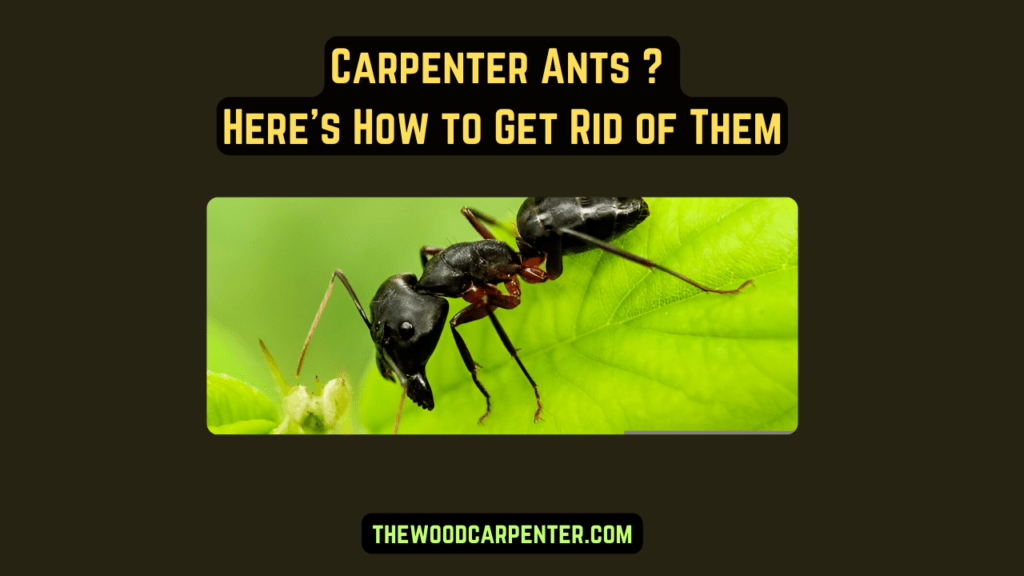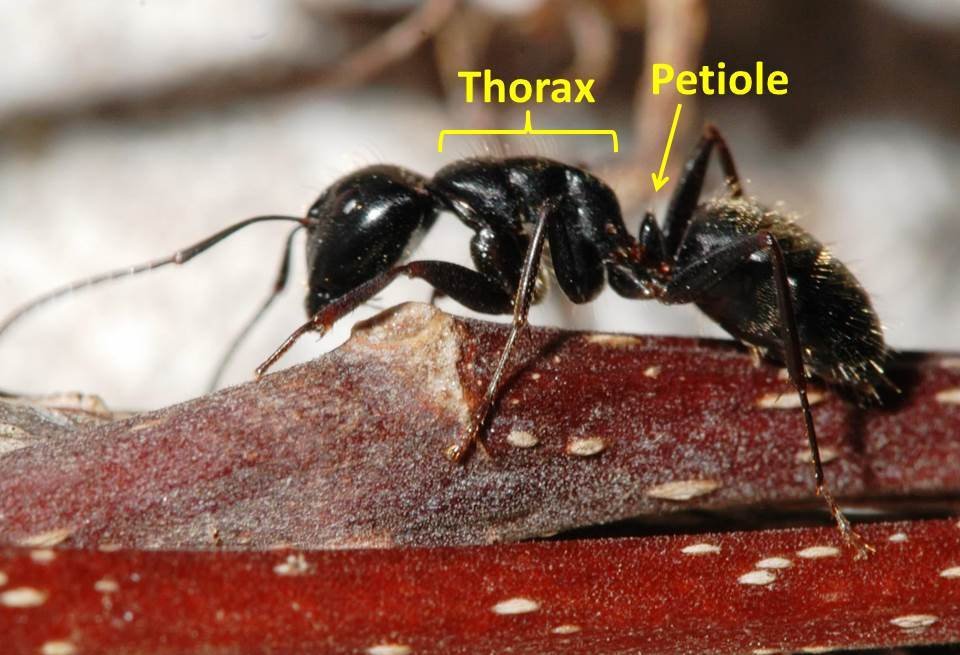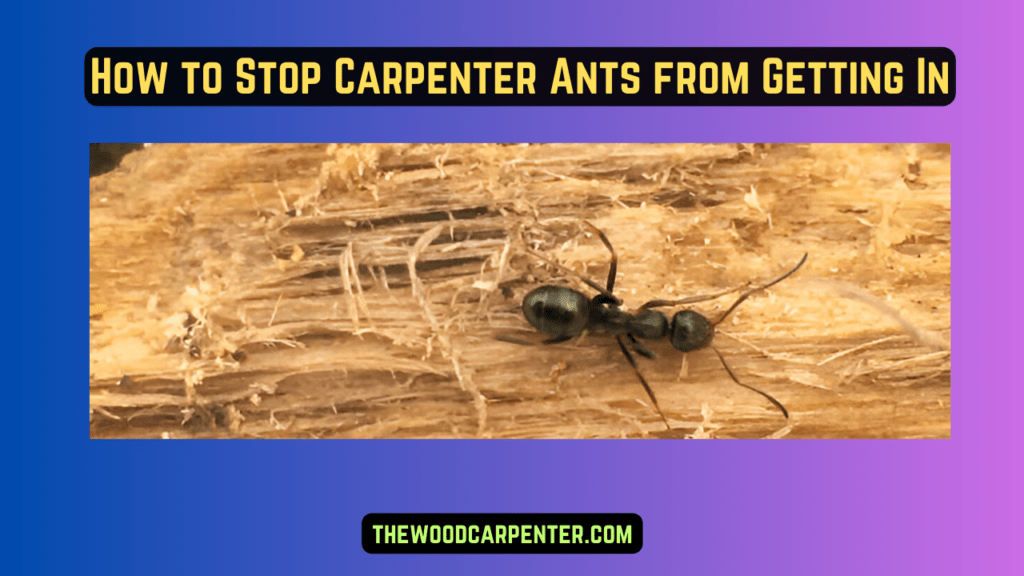
Carpenter Ants: What You Need to Know
If you see big black ants in your home, you might have carpenter ants. These ants can be a big problem. They don’t just bother you—they can also damage your house. Unlike regular ants, carpenter ants dig into wood to make their nests. This can weaken the wood and cause serious problems to your home.
In this article, you’ll learn how to get rid of carpenter ants and stop them from coming back. Whether you have just a few ants or a lot of them, we’ll give you helpful tips that really work.
What Are Carpenter Ants?
Carpenter ants are large ants, usually black or reddish-brown. They don’t eat wood like termites, but they dig tunnels in it to build their homes. This can make the wood weak over time.
They often hide inside walls, ceilings, or other hard-to-see places, so you might not notice them right away. Knowing what they look like is the first step to fixing the problem.

How to Recognize Carpenter Ants
Carpenter ants are about 1/4 inch to 1/2 inch long. They have shiny bodies and a rounded middle part (thorax). They also have big, curved jaws. You may see them moving in groups, and they often leave small piles of wood shavings where they’ve been digging.
Also read:
Natural Mosquito Defense: 9 Plants You Need
How to Get Rid of Rats in the Garden
Why Are Carpenter Ants a Problem?
Carpenter ants are not just annoying—they can cause serious damage to your home. That’s why it’s important to get rid of them quickly.
Damage to Your Home
Carpenter ants dig tunnels inside wood. This can make wooden parts of your home—like beams, roofs, and furniture—weak. If this goes on for a long time, it can cost a lot of money to fix.
Health Concerns
Carpenter ants don’t spread diseases, but they might mean there’s too much moisture in your home. Too much moisture can cause mold to grow, which is bad for your health. Also, other pests might come to live near the ants.
How to Stop Carpenter Ants from Getting In ?

The best way to deal with carpenter ants is to stop them from getting into your home in the first place. Here’s how:
Seal Cracks and Holes
Look around your home for small cracks or holes, especially near windows, doors, and pipes. Use caulk or weatherstripping to close them so ants can’t get in.
Keep Your Home Clean
Store food properly and take out the trash often. Carpenter ants like food and water, so keeping things clean will help keep them away.
Trim Trees and Bushes
These ants often live in trees or bushes. If branches touch your house, ants can use them to get inside. Cut back any plants that are too close to your home.
How to Stop Carpenter Ants from Getting Into Your Home
The best way to deal with carpenter ants is to stop them before they get inside. Here are some easy things you can do:
1. Close Up Cracks and Holes
Check your home for small cracks or holes, especially near windows, doors, and pipes. Use caulk or weatherstripping to seal them so ants can’t get in.
2. Keep Your Home Clean
Store food in closed containers and throw away garbage often. Carpenter ant like food and water, so keeping things clean will help keep them away.
3. Trim Trees and Bushes
Carpenter ants often live in trees and bushes. Cut back any branches that touch your house. This stops ants from using them to climb into your home.
Also read:
Wood Mites: How to Spot, Treat, and Eliminate Them Naturally
Natural Mosquito Defense: 9 Plants You Need
How to Get Rid of Carpenter Ants: Easy Step-by-Step Guide
If you see signs of carpenter ant in your home, it’s time to act. Follow these steps to remove them:
Step 1: Find the Nest
First, try to find where the ants are living. This can be hard because they often hide inside walls or dark places. Look for ant trails, small piles of wood shavings, or damaged wood.
Step 2: Use Ant Baits and Traps
Ant baits work well. The ants take the poison back to their nest, and it kills the whole group. Put the baits where you see ants, but make sure they are out of reach of kids and pets.
Step 3: Use Insect Spray or Powder
Once you find the nest, use an insect spray or powder made for carpenter ants. Follow the instructions on the label carefully so it works properly and safely.
Step 4: Try Natural Remedies
If you want to use natural methods, you can try essential oils like peppermint or tea tree oil. Ants don’t like the smell. Mix a few drops with water and spray it where you see ants.
Using Baits and Traps Effectively
Baits and traps are one of the most effective ways to get rid of carpenter ants. Here’s how to use them properly:
Types of Bait to Use
There are many types of ant baits available, including gel baits, liquid baits, and granular baits. Choose a bait that targets carpenter ants specifically.
Many baits contain slow-acting poisons that are carried back to the nest, eventually killing the entire colony.
How to Place Traps for Maximum Effectiveness
Place traps along the ant trails and in areas where you’ve seen the most activity. Make sure the traps are out of reach of pets and children. Monitor the traps regularly and replace them as needed.
Insecticide Options for Carpenter Ants
While baits and traps are effective, insecticides can also be used to control carpenter ants. Here are some options to consider:
Chemical Insecticides
Chemical insecticides can be applied directly to the nest or along ant trails. Be sure to follow the manufacturer’s instructions carefully to ensure safety and effectiveness.
Non-Chemical Insecticide Alternatives
For those who prefer to avoid chemicals, there are non-toxic alternatives such as diatomaceous earth or boric acid, which can kill ants without harming humans or pets.
Hiring a Professional Exterminator
If the infestation is severe, or if you’re unable to locate the nest, it might be time to call in a professional exterminator. Here’s what to expect:
When to Call a Professional
If you notice an overwhelming number of ants or significant damage to your home, it’s time to consult a pest control expert. They have the tools and experience to address the problem quickly and effectively.
What to Expect from Pest Control Services
A professional exterminator will conduct a thorough inspection of your home, locate the nest, and implement a treatment plan. This may include the use of insecticides, baits, or other treatments.
Dealing with Carpenter Ants in Specific Areas of the Home
Carpenter ants can be found in various areas of the home, and each location may require a different approach:
In the Kitchen and Pantry
Keep food tightly sealed in containers and regularly clean areas where food is prepared. If you notice ants in these areas, use baits or traps to eliminate them.
In the Attic or Basement
Carpenter ants are often found in dark, damp areas like attics and basements. Make sure these areas are well-ventilated and free of moisture, as carpenter ants are attracted to damp wood.
Around Windows and Doors
Ants often enter through gaps around windows and doors. Make sure these openings are sealed properly to prevent future entry.
How to Maintain Your Home After Treatment
After successfully eliminating carpenter ants, it’s essential to maintain your home to prevent new infestations:
Monitoring for New Activity
Keep an eye out for signs of new ant activity, especially during the spring and summer months when carpenter ants are most active. If you spot ants, act quickly to address the problem.
Keeping Your Home Clean and Pest-Free
Regular cleaning, sealing cracks, and proper waste management will help keep your home free from pests.
Common Mistakes to Avoid
When dealing with carpenter ants, avoid these common mistakes:
Misidentifying the Ants
Be sure you are dealing with carpenter ants and not another type of ant. Misidentifying the problem can lead to ineffective treatments.
Using Ineffective Methods
Some DIY methods, such as spraying ants with household insecticides, can be ineffective or even make the problem worse. Be sure to use targeted treatments like baits and insecticides specifically designed for carpenter ants.
Natural Ways to Prevent and Eliminate Carpenter Ants
If you prefer to avoid chemicals, here are some natural methods that can help:
Essential Oils and Vinegar
Mixing essential oils like peppermint or tea tree oil with water can deter ants. Vinegar is another natural remedy that can kill ants on contact.
Diatomaceous Earth
Diatomaceous earth is a natural powder that kills ants by damaging their exoskeletons. Sprinkle it in areas where ants are active.
How to Repair Damage Caused by Carpenter Ants
Once the infestation is dealt with, repairing the damage caused by carpenter ants is essential:
Repairing Wood Damage
Damaged wood can be repaired using wood filler or by replacing the affected sections. If the damage is extensive, you may need to consult a professional carpenter.
When to Call a Carpenter
If the structural damage is severe, it’s best to call a professional carpenter to ensure your home is safe and secure.
Conclusion
Carpenter ants can cause big problems, but you can get rid of them with the right steps. By spotting the signs early, using baits and traps, spraying insecticides, and stopping them from coming back, you can keep your home safe. Always check your home regularly and stay alert to keep these ants away.
FAQs
1. How do I know if I have carpenter ants or termites?
Carpenter ants are larger and have a narrow waist, while termites have thicker waists and straight antennae.
2. Can carpenter ants damage furniture?
Yes, carpenter ants can damage wooden furniture by hollowing out the wood to build their nests.
3. Are carpenter ants harmful to humans?
While carpenter ants don’t bite or sting, their presence can indicate moisture issues that can lead to mold growth.
4. Can I eliminate carpenter ants with essential oils?
Essential oils like peppermint and tea tree oil can repel carpenter ants, but they may not eliminate a large infestation on their own.
5. Should I call a professional if I have carpenter ants?
If the infestation is large or causing significant damage, it’s a good idea to call a pest control professional for help.

